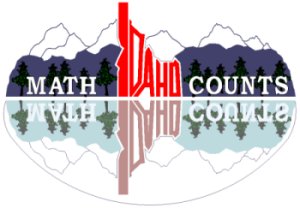|















| |
Idaho Society of Professional Engineers
Friday Update - 04/02/04
UPCOMING EVENTS:
● ISPE Southwest Chapter Luncheon, Tuesday,
April 20, 2004, 12:00 Noon, Burger n Brew Restaurant, 6125 Fairview Avenue (near
Curtis), Boise, Speaker: Lieutenant Governor Jim Risch
● IBPEPLS Board Meeting, April 30 and May
1, 2004
● NSPE 2004 Convention and Expo, July 8 -
10, 2004, Honolulu, Hawaii
REGISTER NOW!
Gather your colleagues together around your computer terminal and you can all
participate for one low price.
NSPE Spring 2004
Ethics Forum
April 21, 2004: Professional Competency
May 19, 2004: Protection of the Public Health & Safety

MATHCOUNTS PROBLEM OF THE WEEK
Can you solve this MATHCOUNTS problem? The answer will appear in next week's
edition of the Friday Update!
The Torch Burns Again
On March 25, the Olympic torch was lit once again. However, this particular
torch tour is especially significant, given that this is the first time the
torch will visit every continent (except Antarctica) before returning to the
site of the Olympic games, which is back in Greece. The exact route of the torch
has been something of a mystery once it leaves Greece. Assuming the torch will
leave its continent of origin, visit the other five continents exactly once
each, and then return to its continent of origin, in how many different orders
could the other five continents be visited?
--------------------------------------------------------------------------------
The tour of the torch is very long. First, the torch travels March 25 through
March 31 through Greece, until it gets to the Panathinaiko Stadium in Greece. At
this point, the flame will stay at the stadium from April 1 through June 3. Then
on June 4, the torch will begin its non-stop international tour, which returns
on July 9th to Greece, where it will immediately begin an additional tour of
Greece lasting through August 13. From March 25 through August 13, what percent
of the days is the flame stationary at Panathinaiko Stadium? Express your answer
to the nearest whole percent.
--------------------------------------------------------------------------------
During one stretch of the tour, the torch will travel 1500 kilometers, while
being carried by 3600 different torchbearers. Over this stretch, what is the
average number of miles each torchbearer will carry the torch? Express your
answer as a decimal to the nearest hundredth. One kilometer is approximately
0.62 miles.
Answer to last week's problem:
Starting off with a Venn Diagram will probably be helpful! We know that “only
T”: “only T&W” = 10:1 and “only T&U”: “T&W&U” = 1:20 and “only T” : “T&W&U” =
1:3. Notice that “T&W&U” is involved in two of these proportions. It has values
of 20 and 3 in those proportions. Let’s make the value in both proportions equal
to 60, which is the LCM of 20 and 3. Then our three proportions would be: “only
T”: “only T&W” = 10:1 and “only T&U”: “T&W&U” = 3:60 and “only T” : “T&W&U” =
20:60. Also notice now that “only T” is in two of the proportions and has values
of 10 and 20. Let’s make them both 20, which gives us the following proportions:
“only T”: “only T&W” = 20:2 and “only T&U”: “T&W&U” = 3:60 and “only T” :
“T&W&U” = 20:60. Notice that there are only four “kinds” of viewers that could
have watched on Tuesday: “only T,” “only T&W,” “only T&U,” and “T&W&U.” Each of
these is represented in our proportions. If we allow “only T&W” to be 2x, then
“only T” is 20x, “T&W&U” is 60x, and “only T&U” is 3x. The sum of these gives us
our total of 25.5 million viewers of Tuesday’s show. So 2x + 20x + 60x + 3x =
25.5 million. Simplifying, we see that 85x = 25.5 million and x = .3 million.
Therefore, there would have been 60x = 60 × .3 = 18 million viewers of all three
episodes.
--------------------------------------------------------------------------------
We can set up the proportion 30/12.1 = x/15. Solving for x, we see that x = 37%
--------------------------------------------------------------------------------
There are 3 hours to finish out Dec. 7, 2002. Then there are 24 more days of
December. In 2003, there were 365 days. Then there were 31 and 29 days in the
first two months of 2004. In March, there were 6 days and then 21 hours on March
7. That’s a total of 456 days, which is 456 × 24 = 10,944 hours, which is 10,944
× 60 = 656,640 minutes, which is finally 656,640 × 60 = 39,398,400 seconds.
If you want to see last week's problem again, click on
http://www.mathcounts.org/Queries/POW_Archive.taf?_function=detail&Q_A_uid1=486&_UserReference=812048AD64EB79574069BE72
Idaho Society of Professional Engineers
PO Box 170239
Boise, ID 83717-0239
208-426-0636
Fax: 208-426-0639
E-Mail: ispe@rmci.net
Web Site: www.Idahospe.org
| |

ISPE
MATHCOUNTS
Program

National Engineers Week - Future City Competition

Board of Professional Engineers and
Professional Land Surveyors
--News
Bulletins
--Meeting
Minutes


|
 Idaho
Society of Professional Engineers
Idaho
Society of Professional Engineers